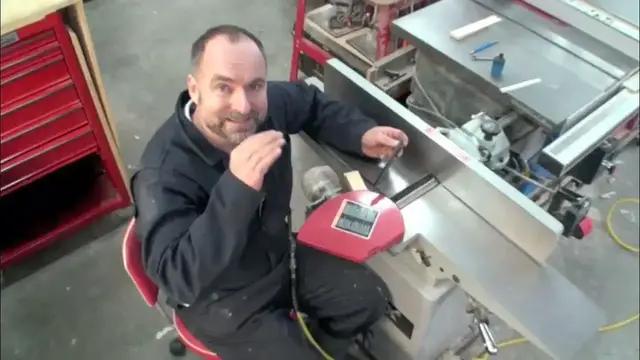10 tuning up your jointer
Show More Show Less View Video Transcript
0:00
Replacing dull knives in your jointer is one of the trickiest machine setup operations you'll have to do in the workshop
0:07
And the reason has to do with the way the blades are held in
0:11
I want to show you a specific way for getting the blades installed correctly
0:15
It's fast, but more importantly, it's also very accurate, which is vital when it comes to this job
0:21
The challenge springs from the design of most jointer knives. They're just a rectangular piece of steel with a bevel sharpened on one edge
0:30
There's no groove or hole or anything to register this blade in the revolving cutter head
0:36
The adjustment of the height on all three knives is entirely up to you
0:41
And it's got to be within several thousandths of an inch in order for this machine to work right
0:46
I can show you how to get that kind of accuracy with nothing fancier than an ordinary piece of wood
0:52
The first step, of course, is to shut off any power to the machine. Either unplug it, or in the case of this jointer, which is hardwired into the circuitry, shut off the breaker
1:01
In either case, try the switch. Turn the thing on. Make sure it's not going to come on before you get involved with this
1:08
because you're going to be touching all the knives, and you definitely don't want the machine to start up
1:12
Next, retract the guard and put some wedges under it, just to hold it back
1:19
When you look at the cutter head, you'll find that it probably has three blades. This one does
1:23
And there are four bolts that hold that blade in. The first step is just to loosen them
1:31
And it doesn't take very long. They're small. They're not hard to turn
1:39
And you need to loosen them all enough so that the knife and its holder actually comes out
1:45
With the knife and its anchor strip removed, it's a good time to clean all the sawdust out from the cutter head
1:55
You'll also find that different places will have resin buildup. It's a good chance to remove that now
2:01
The trick is getting the knives so that they're all exactly the same distance from the center of the cutter head
2:07
Now, you can use a dial gauge or other fancy machinist's tools to get this job done
2:13
Or, as I said, just an ordinary piece of wood. Start by putting the blade and its holder back in the cutter head
2:21
And then snug up the anchor bolts. Not too tight, but just tight enough to hold the knife wherever you put it
2:27
Now you have to lower the outfeed table of the jointer just a little bit
2:32
Maybe a thirty-second or a sixteenth of an inch at the most, below the top of the arc of the blade as the cutter head rotates
2:41
With your new blade snugged up in the holder, and the outfeed table lowered a little bit
2:46
and a fairly narrow piece of wood laying on top, turn the cutter head so that the knife just contacts the wood
2:57
Mark where the edge of the outfeed table is with a sharp pencil
3:04
and then rotate the cutter head, pulling the piece of wood until the blade leaves
3:12
Mark again. That distance is critical because it's a magnified view, in a sense, of the height of the knife
3:23
You now repeat the same process at the other end of the knife
3:27
adjusting the blade so it's a consistent level all the way along, and repeat the process for the other blades
3:34
Snug everything up, raise the outfeed table so that it's just level with the top of the arc of the blade, and you're good to go
#Home & Garden
#Home Improvement
#Construction & Power Tools



